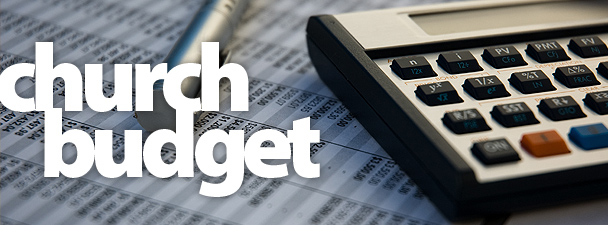It’s not uncommon for some small churches to operate without a budget because it’s not uncommon for many people to operate without a budget in their personal finances. The church I serve operated for the first few years without a budget. In their minds as long as the incoming was greater than the outgoing then everything was fine.
In my mind, everything wasn’t fine, in my mind that seemed like a terrible way to handle church finances. They needed a budget, and your church does too.
A budget allows you to not only see where the money is going but gives you the ability to plan where the money is going.
The interesting thing was they weren’t opposed to a budget, they just didn’t know how to set one up. You may be in the same situation, so I want to show you how to create a simple church budget.
A budget is made up of income and expenses.
Income is pretty simple. It consists of tithes, offerings, and any other type of special giving. The income in your budget should reflect the average giving in your church over the last few years.
If your church has been growing or declining, it can be wise to look at the trends over multiple years. For example, say your giving in 2014 was $250,000, in 2015 it increased to $300,000, and you’re on track to receive $350,000 in giving in 2016. If this is the case, you may feel comfortable budgeting your income at $400,000 for 2017.
Remember you can always go back and readjust if giving is more or less than you expected.
Now, let’s move on to expenses. The great thing about tracking expenses is that you can see exactly where the money is going. To keep things simple, let’s put our expenses into five categories.
Employee Compensation
In this category you want to track salaries, but don’t forget about the additional employee expenses such as: housing, bonuses, insurance, retirement, payroll taxes, etc. All of these should be included in this category. The average Protestant church spends around 45% of their total budget in this category.
Facilities
Facilities include mortgages, leases, utilities, landscaping, and maintenance. We also include expenses like cleaning supplies, paper towels, hand soap, toilet paper, etc. This category should make up 20-25% of the total budget.
Ministries
For us this category consists of any expense related to the ministries in our church including: kid’s ministry, first impressions, small groups, student ministry, worship ministry, and leadership. This category should be around 10% of the total budget.
Outreach
Outreach includes foreign and local missions, marketing, and benevolence, as well as other administrative costs. This category makes up 5-10% of the total budget.
Weekend
This category consists of expenses directly related to the weekend worship experience. A large portion of this budget is related to special events like Easter, Mother’s Day, Father’s Day, Fourth of July, and Christmas. It also includes things like coffee, doughnuts, free gifts, and creative elements in the service. This category is around 5% of the budget.
Hopefully, if you’ve done the math correctly, you should have 5-10% of the budget leftover for savings. However, don’t be surprised if unexpected expenses arise that take a portion of this percentage.
If you’ve never had a budget before, you may have to guess on some of the expenses the first year. Don’t let this keep you from doing a budget. What you’ll find is that each year you’ll get better and better at knowing where the money is going, and that’s a very important thing.
Does your church have a budget? If not, I’d love to help you get one set up, just go to my contact page and send me an email. Also, if you haven’t already make sure to subscribe to the blog and get tips on church growth, leadership, and more delivered to your inbox each week.





